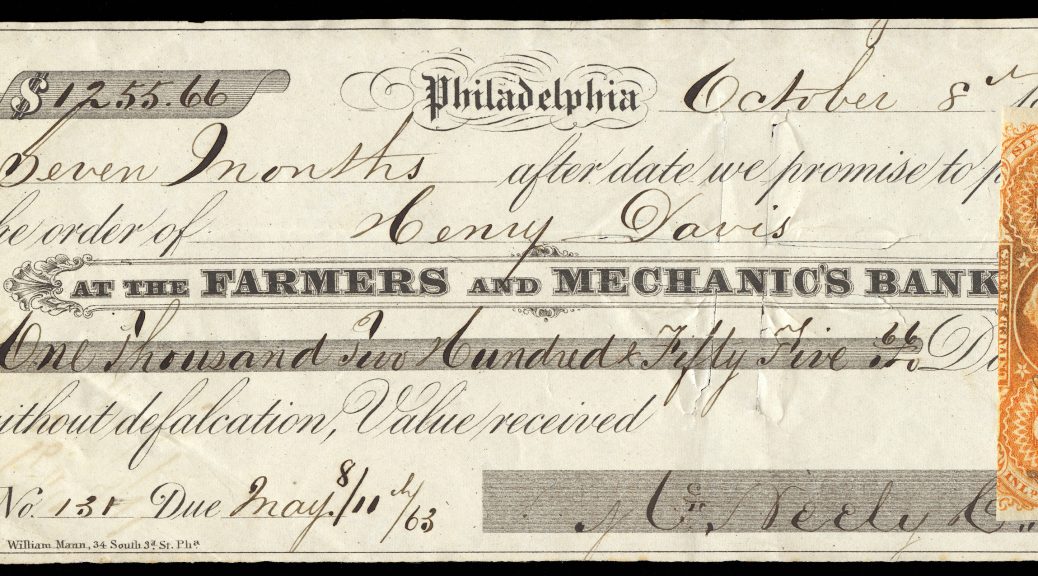
An Obviously Backdated 1st Issue Revenue Usage
We’ve discussed in the past cases where a revenue stamp was presumably affixed after the fact and backdated to the original transaction date. Frequently these cases are speculative. Here is one that is definitive.
The promissory note shown below, dated October 8, 1862, is an incredibly early usage, and is arguably the earliest known use of R64a… but there’s a problem. The 60-cent Inland Exchange wasn’t delivered until December of 1862, so it could not possibly have been affixed at the time this note was written.
At some point between when the note was written and the time of payoff (or at the time of payoff) in May of 1863, the lack of tax was noted, and the stamp affixed and backdated.
The tax rates had changed between the time the note was written and the time it was paid off. 60 cents was the correct rate in October of 1862, but the rate for the amount in this transaction had increased to 70 cents by May of 1863.
So it isn’t what it appears to be at first glance, but still a very nice EMU (early matching usage).
